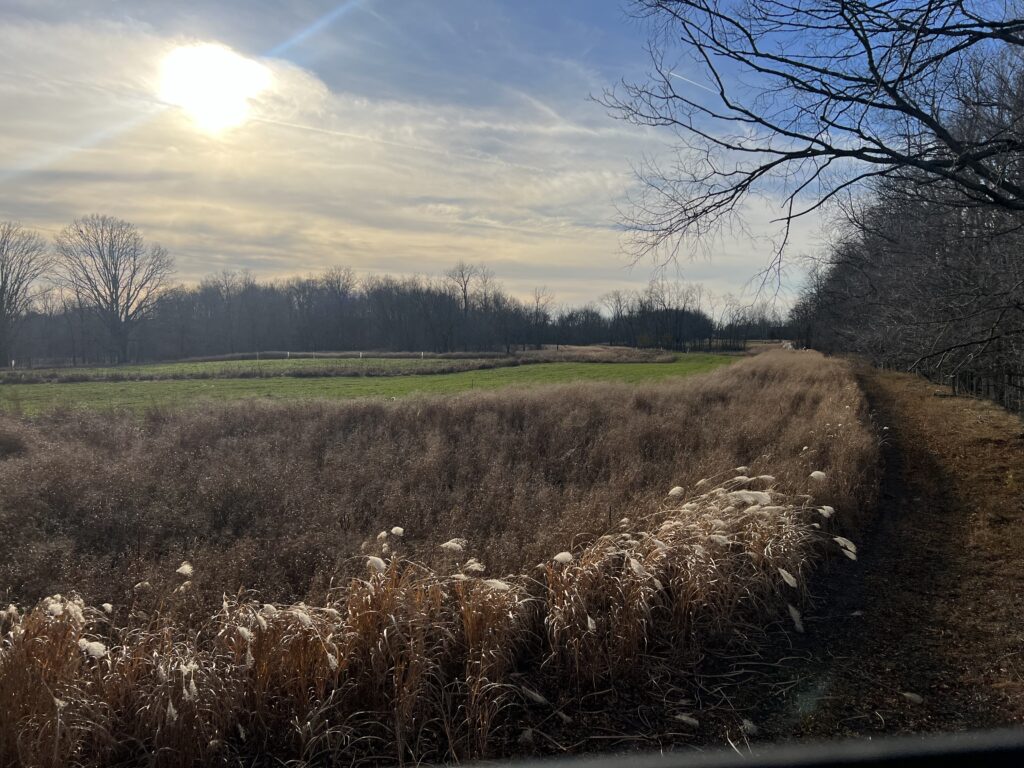- (269) 550-7974
- 1225 W. State St. Hastings, MI 49058

Thanks for taking a look at our articles. Over the past weekend we finally had the guts to let the fire fly on our Miscanthus and switchgrass stand.
I purchased this 68 acre farm with two of my best friends four years ago, since we closed we have been hard at work trying to turn this farm into one of the best in the neighborhood. The first year we planted about 10 acres of switchgrass to screen and provide access around the farm, the next year I discovered Giant Miscanthus and since we have planted 4,000+ rhizomes. This will be the fourth growing season on this switchgrass so we knew it was time to gain the courage and burn it. Burning switchgrass is imparitive to a great stand. First, it will kill small woody vegetation that’s started growing, second, eliminates any competition in the stand. Last, it takes care of all that old switchgrass foder that the new growth has to fight thru for sunlight.
My buddy Kyle and I started talking abou burning this stand last year and never really had the guts to light the match. We have never been a part of a “controlled burn” like this and was quite nervous. The biggest concern we had was the swamp that much of the switchgrass borders. Well, Saturday morning we met at the farm and started making a game plan, I jumped in the tractor and started bush hoggin the switch and miscanthus closest to the edge we were worried about. I will say after burning, this was a GREAT decision. I left the switch tall on the edge closest to the food plot, I knew this couldn’t go anywhere. Kyle and Marky followed on the Kubota blowing as much of the debris back into the stand. Creating as much of fire break as possible. Bush hoggin the switch kept the fire low, slower and a hell of a lot easier to control.
Once we had the fire break and bush hoggin complete we grabbed the sprayer, filled it with 45 gallons of water, threw shovels, rakes and a a back pack blower for each guy. Some of this was over kill, but like I said earlier we were a bit nervous and wanted to make sure we were prepared if something went sideways. When we had everything loaded up we headed for the downwind side of the switchgrass stand. Of course, when we had everything ready to go and standing there torch in hand we noticed the wind had picked up a bit. I looked across the plot and seen my buddy Glen walking our way. I knew Glen had experience burning, I was happy to see him headed our way. Big Glen walked up and was trying to figure out what the hell we were doing…he told us to let her fly. Kyle did the honors and started our back burn. Once it got started I realized if you really pay attention to the wind and spend your time on the fire breaks its quite easy to control. Once we had a good chunk back burned Kyle just kept jump ahead 20-30 yards and would lite a head fire burning toward the already burned area. Once the head fire reached the back burn she would put herself out and we just continued this process around the plot. there were a few areas I wished we would have spent more time making a better fire break. It was super stressful trying to keep the fire from jumping the line in a few spots. The Kubota with the F/S sprayer was nice to have. It didn’t take much water to put the fire out. We also sprayed down a areas here and there to help keep it contained.
Overall, I thought the burn was a hell of a lot easier than anticipated. When we do it again I’ll take the fire break process more serious. When that fires rolling and the wind picks up or changes direction that’s all you’ve got to save you. I will definitely Busch hog the outer edge at least 20-25 feet from the fire break to eliminate the 10-12ft flames. Last, and I’m serious when I say this, if we can do it anyone can. Just don’t rush it, pick the right day with low wind and a steady direction.